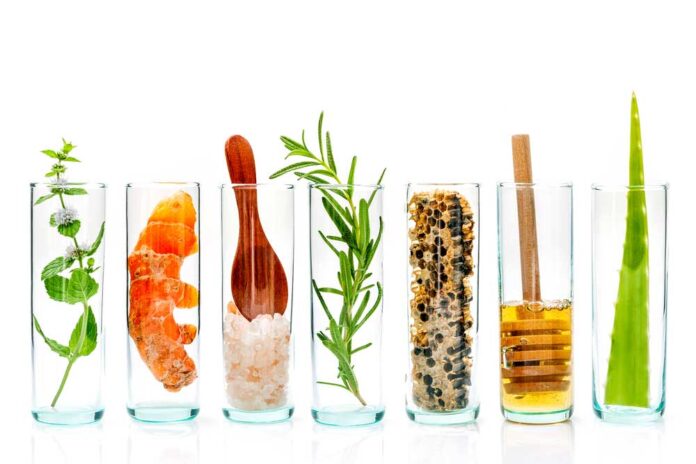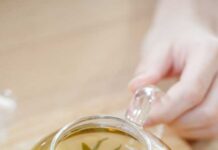
Hair spray is a popular cosmetic hairstyling item used to secure your hair from humidity and air. Film-forming materials are used in these materials, which are dispersed as a fine mist. Once these materials dry, they build little glue-like spots on the hair shafts which keep them together. Hairsprays seem to be either aerosols or non-aerosols, depending on whether they are operated by pressurized different gasses or dispensed by mechanically depressing a nozzle.
Hairspray grew popular after the aerosol formulation was patented and the aerosol spray can was created in the 1940s. Cfcs were by far the most common liquid propellant in hairsprays previous to 1979. These were replaced due to environmental issues. Many aerosol cans today use hydrocarbon propellants including butane and propane instead of chlorofluorocarbons (CFCs), which are harmful also for the ozone layer.
A hairspray consists of some raw materials in general. Raw material usually includes holding agents, solvents, additives, propellants together.
Holding agents are something when designing hair styling materials, chemists can choose from a variety of polymers. Polyvinylpyrrolidone or PVP is a popular polymer used during hair styling products, for example. More generally, PVPVA is a copolymer with increased humidity tolerance and thus better curl retention. Vinyl acetate & crotonic acid are another popular copolymer. As solvents, water is the cheapest source. Then ethanol (other VOCs) is another famous one though it causes air pollution.
There have been no licensed substitute solvents to date. Additives are called plasticizers and are used to change the way polymers work. Silicones, isopropyl myristate, diethyl phthalate are examples of chemicals that can make hairspray films more stable and less crisp. To regulate resin solubility and reduce rusting on the inside of the container, neutralizing and anti-corrosion agents such as aminomethyl propanol (AMP), borate esters, ammonium hydroxide are added. Then it comes about propellents.
CFCs (chlorofluorocarbon gases) were once used, but they were removed due to their alleged role in the ozone layer destruction in the planet’s atmosphere. Cfcs are replaced with hydrocarbon propellants such as butane and propane. The use of hydrocarbons has declined as a result of legislation. Dupont scientists have designed a new category of propellants.
Hydrofluorocarbons (HFCs) are a form of hydrofluorocarbon that has most of the same properties as cfcs but is less environmentally damaging.
So, now we can say that many chemicals are used in hairsprays. These dangerous substances are hazardous, but they also pollute the atmosphere. Modern hair sprays may be replaced with organic hair sprays. They’re made with raw, biodegradable ingredients that were sourced ethically. Their processing and packaging are both environmentally friendly and long-lasting.
If we talk about the overall safe ingredients in an organic hairspray, here are the characteristics as well as ingredients mentioned below:
- If a product contains at least 60-70% organic ingredients, it can be categorized as “organic.” the organic as well as non-organic ingredients should be listed on the bottle, and also the name of the organic certifier.
- They are free of parabens (for example, propyl, isopropyl, butyl, isobutyl, DmDm hydantoin) as well as sulfates.
- Cruelty-free, vegan; also free from gluten and dairy.
- Essential and different sort of oils: oils here are generally hexane free, cold pressed, non-refined. Organic sweet orange oil, organic geranium oil, organic bergamot oil, organic olive oil, organic rose hip oil, tangerine peel oil, citrus aurantium dulcis peel oil and etc.
- Natural hair styling materials that are free of GMOs (genetically modified organism) and copolymers.
- Organic hairspray would be lack of PEGs (polyethylene glycols), ceteareth as well as polyethylene.
- There would not be any phthalates (one kind of plasticizer), synthetic chemicals or dyes.
- The packaging can be even recyclable.
- There must be some herbs and plant parts in the organic hairspray. Organic green tea, aloe vera, sweet almond fruit extract, organic sage herb, organic thyme herb, sunflower seed extract, chamomile flower extract, lavender flower extract, arnica montana flower extract, sugar cane extract, fruit stem cells, hibiscus sabdariffa flower extract, bioactive 8 berry complex, white tea leaf extract, panax ginseng root extract, citrus grandis (grapefruit) fruit extract, vanilla planifolia fruit extract and so on can be included in the hairspray.
Organic hairsprays are safer than the chemical hairspray. Just check out the toxic ingredients before buying any of them. Toxic ingredients like phthalates, formaldehyde, fragrances, peg or propylene glycol, alcohol should be avoided. Such organic products provide volume as well as shine to your hair, making it easier to style. Many even assist in the reduction of frizz as well as flyaways.













